Vincent Doumeizel
Translated from the French by Charlotte Coombe
Hero Press (2023)
ISBN-978-1-91564-385-8
246 pages, INR 584/- (Hardcover)
Kindle Edition: INR 164.37/-
Life on earth originated in the ocean millions of years ago and only very recently – in evolutionary terms – has begun to evolve outside the water. Human connection to the sea is unique and timeless. As a condition of our life on earth, our relationship with this vast expanse of water which we believe to be inexhaustible, could well decide the future of our civilization. The book The Seaweed Revolution: How Seaweed has Shaped our Past and can Save our Future helps to reconnect with the living species in the oceans and collaborate with the marine phenomena with which we share our origin and thus bring about an ecological, geopolitical, medical, social, and humanistic revolution – simply put, the gist of the ‘seaweed revolution’.
Seaweed or algae have no differentiated cells; unlike a plant, it has no roots, flowers or sap. It has a holdfast, a stipe and fronds (which are similar to leaves). Though some green seaweeds are an ancestor of land-based weeds or grasses, they are not weeds; rather they should be called ‘sea vegetables’ or ‘sea greens’. Possibly one day they may be called ‘sea forests’ from an ecological point of view. Preserving them is just as necessary to life on earth as saving the forests of the Amazon or elsewhere. Vincent Doumeizel introduces us to the world of seaweeds, imbuing it with all the charisma of an unsung hero who is expected to arise as the savior of the earth’s future.
The book focuses on macro-algae – their advantages, benefits and uses as food, benefiting our health and our planet. It also talks of how they can be cultivated without damaging the ecosystem. There are nine chapters in the book, dealing with the significance and role of seaweed as human food, animal feed, and as bio-stimulants for agriculture. The book then talks of its place in carbon sequestration, medicine, innovations to replace plastic and textiles; and then to its contribution in combating poverty. Doumeizel also discusses its cultivation practices, the risks and opportunities, and ends with optimistic predictions for the future.
Seaweed has learned to survive all over the earth – from opaline glaciers to sun-scorched lagoons, from salt-saturated seas to freshwater rivers. It adapts well to all environments and in all geographical conditions. The writer refers to them as ‘nutritional bombs’ loaded with fibre and micronutrients. They are low in fat and contain Vitamins A, C and K; as well as Iron, Iodine, Magnesium, Phosphorus and Zinc. They also contain Vitamin B12 and Omega-3 fatty acids (EPA and DHA).
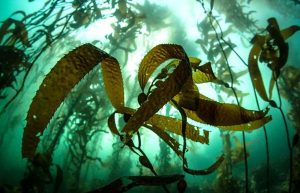 A marine forest, off the coast of northern California, dominated by fast growing giant kelp (Ethan Daneils/Shutterstock), Source: www.newscientist.com
A marine forest, off the coast of northern California, dominated by fast growing giant kelp (Ethan Daneils/Shutterstock), Source: www.newscientist.com
A small warning to Europeans and Americans: despite its numerous benefits, overconsumption of seaweed is harmful to you. But for Asians, especially the Japanese, there is no overdose effect. Studies have demonstrated the transfer of enzymes from marine bacteria into the guts of Japanese people, enabling the seaweed to be assimilated much better; also, the culinary traditions of Asians reduce the risk of over-absorption. The fact is that only Asia is cultivating such a nutritious and abundant resource scientifically and conscientiously. China, Indonesia, both South and North Korea, Japan, Malaysia, the Philippines, etc., are more closely associated with seaweed domestication and cultivation.
The use of seaweed as fodder has bestowed it with names such as ‘cow’ seaweed, ‘horse’ seaweed and ‘pig’ seaweed. The protein content of certain seaweeds is higher than that of soybeans on DM basis and its products limit the dysfunction of the digestive system or kidney problems and improve the quality of milk and the longevity of dairy cows. A red seaweed – Asparagopsis – is found to reduce methane emissions in dairy animals. On the whole, they can be regarded as ‘super foods’, beneficial to both humans and animals.
The chapter describing the role of seaweed in sequestering carbon, reversing global warming and restoring the oceans, offers a vivid history of Azolla, the first green to change climate during the Eocene era (50 million years ago), which can be read as a fascinating story. It is to be noted that the CO2 concentration in the atmosphere at present is 450 ppm, which we must bring down to 300 ppm to reach pre-industrial levels and protect the environment. The author stresses that seaweed may become the only food capable of reversing the curve of climate change and cooling the atmosphere due to its potential in greenhouse gas emission reduction. Global warming is a threat to seaweed too; as many large species are disappearing due to ocean water heating up, as they only thrive in the cold.
Nature reminds us of our original connection with the oceans. Seaweed holds many solutions to the problem of malnutrition, which is still prevalent in 54 countries according to WHO. It is already recognized and accepted that seaweed has anti-cancer, anti-inflammatory, anti-viral, analgesic, immunomodulatory, antibacterial and antifungal properties. It is a fantastic probiotic and is effective against obesity, diabetes and heart disease. Seaweed is also used in cosmetic and hygiene products. It can replace plastics and colorants, and is also used to make paints and plastering materials. Seaweed is a source of agar, carrageenan, alginate (texturizers) and many other food additives (phyco-colloids). It is an ethical sector that can combat poverty in the coastal population.
Let me mention the names of a few seaweed genera for the general reader’s benefit: Cochayuyo, Chondrus, Macrocystis, Gracilaria, Kappaphycus, Asparogopsis, Porphyra, Palmaria, Ascophyllum, Colpomenia, Sargassum, etc. The book has drawings and colour photographs of some of them with relevant descriptions. Each chapter also has captivating anecdotes, which makes reading it a delight.
India is expected to develop seaweed strongly in the coming years as it has about 800 endemic species of seaweed. In 2020, the Indian government announced funding of around USD 80 million to promote the development of seaweed farming, marking a step in the right direction. The sector can contribute to gender equality and women’s empowerment as well through the creation of an inclusive and truly regenerative aquaculture model.
To digress, India’s seaweed production is only a meagre 0.02% in world production, and our cultured seaweed production is very low when compared to the wild seaweed collection. The apex agency promoting its cultivation is the Department of Fisheries, Government of India. The National Fisheries Development Board (NFDB) is an autonomous body under the department that gives funding support to the Central Salt and Marine Chemicals Research Institute (CSMCRI), the Central Marine Fisheries Research Institute (CMFRI) of ICAR, the National Institute of Ocean Technology (NIOT) and the State Fisheries Departments. Since 2017, there have been collaborative efforts in training and demonstration, assistance for seaweed cultivation and establishment of seaweed processing units. Pradhan Manthri Matsya Sampada Yojana (PMMSY) is providing opportunities to increase the income of seaweed farmers, and the present plan initiated during 2020-21 for a period of five years, aims at the convergence of various departments and agencies to achieve a production target of 11.2 lakh tons by 2025.
Vincent Doumeizel gives details on how to cultivate seaweed in the oceans. This part is very important to an extensionist and an industrialist who are interested in diffusion and capitalization, respectively. Presently, seaweed covers less than 2000 square kilometers of our planet; whereas it is possible to cultivate 48 million square kilometers! The book enumerates the challenges to be expected if this is undertaken. The author also warns of the consequences of cloning it and stands firmly behind maintaining maximum biodiversity, which is important for the sustainable development of the sector.
Though research on seaweed is done extensively in India and numerous doctorates are awarded by national institutes and state universities/colleges in botany, biotechnology, engineering, marine biology, aquatic biology, algal research, environmental studies, agriculture, etc., ground-level activities to spread seaweed cultivation have not been equally impressive. The shortage of extension activities becomes evident here.
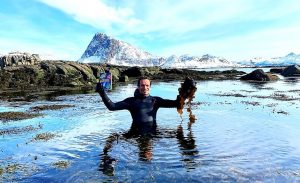 Vincent Doumizel holding a copy of the french edition of his book while standing in the chilling waters around the Loften islands in Norway, Source: https://thefishsite.com
Vincent Doumizel holding a copy of the french edition of his book while standing in the chilling waters around the Loften islands in Norway, Source: https://thefishsite.com
At present, information dissemination is limited mainly to consulting services. Therefore, it is imperative to train fishermen, farmers and industry personnel on knowledge about the methods of cultivation, harvesting and processing of seaweed, along with the commercialization of workable technologies (research outcomes). The implementation of regulations on the exploitation of marine algal resources, strict effluent treatment procedures for industries located along the coast, conservation and protection of algal resources for future generations, etc., are other activities that need to be strengthened as part of extension. Also, extension can play a major role in the organization of SHGs in the coastal areas and facilitating them for seaweed farming and processing, since algal cultivation and collection play a major role in the lives of small-scale fishing communities in India.
The book tags seaweed as ‘hope’ for the world of tomorrow, and the author paints an imaginary utopian scenario (really exciting) of 2050 to answer the question: Can seaweed represent new hope for the world of tomorrow? In this scenario, he hypothesizes that in India and Africa seaweed cultivation will allow for greater food sovereignty, which reduces the nutritional deficiencies of the population as well as dependence on external foreign aid. He dreams of algae culture having its own curriculum in universities. He goes on to imagine that the Indian government made it compulsory for aquaculture production, particularly shrimp production, and incorporated seaweed into it so as to limit waste runoff and reduce negative effects on the environment. And a lot more……The book also has 183 notes and references on specific terms, related articles and websites, and even a range of seaweed cookery books.
| Vincent Doumeizel is Senior Advisor on the Oceans to the United Nations Global Compact as well as Director of the Food Program at Lloyd’s Register Foundation. He is a collaborator with international agencies and has released a ‘Seaweed Manifesto’ and now co-leads the Global Seaweed Coalition. Charlotte Coombe is an award-winning British translator working from French and Spanish into English since 2008. (You can read more about them in the last portion of the book.) |
Shyam Suraj SR
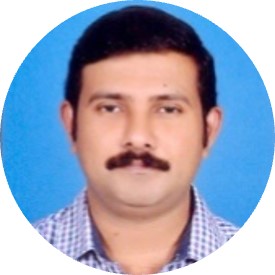 Dr. Shyam Suraj SR, Assistant Professor (Dairy Extension), College of Dairy Science and Technology, Kerala Veterinary and Animal Science University (KVASU), Thiruvananthapuram, Kerala (695 040), India. Email: shyamsura@gmail.com
Dr. Shyam Suraj SR, Assistant Professor (Dairy Extension), College of Dairy Science and Technology, Kerala Veterinary and Animal Science University (KVASU), Thiruvananthapuram, Kerala (695 040), India. Email: shyamsura@gmail.com

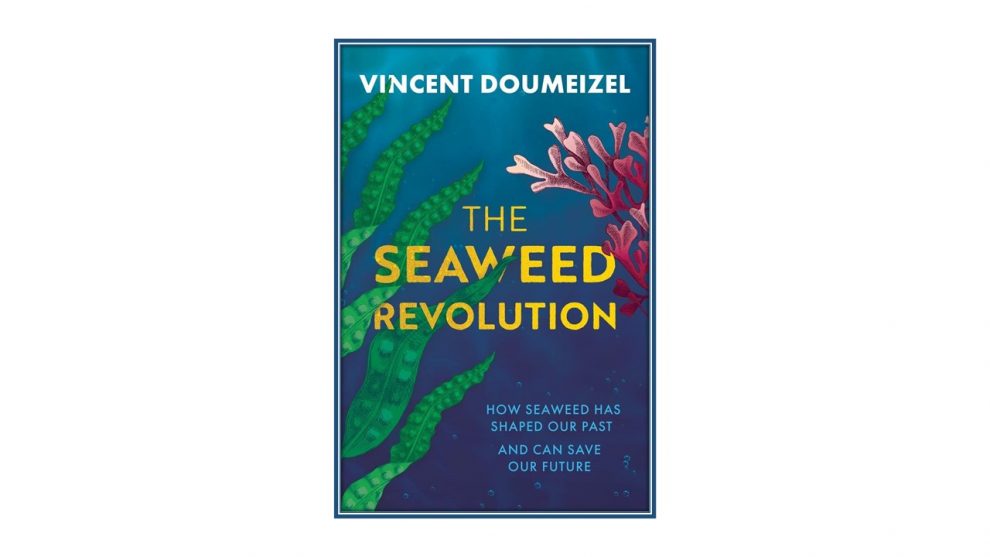

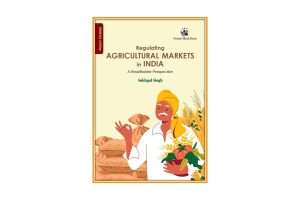

The author Vincent Doumeizel painted a rosy picture about the advantages of seaweed cultivation and its use as feed for human beings and animals including fish. It was projected that sea weed is the future for many countries including India. It is also claimed that seaweed as a panacea for all ills. In authors words “ It is already recognized and accepted that seaweed has anti-cancer, anti-inflammatory, anti-viral, analgesic, immunomodulatory, antibacterial and antifungal properties. It is a fantastic probiotic and is effective against obesity, diabetes and heart disease. Seaweed is also used in cosmetic and hygiene products. It can replace plastics and colorants, and is also used to make paints and plastering materials. Seaweed is a source of agar, carrageenan, alginate (texturizers) and many other food additives (phyco-colloids). It is an ethical sector that can combat poverty in the coastal population.”
Although Sea weed has many advantages, the major problem is that it contains high levels of heavy metals which restricts its use.
Thanks to Dr. Shyam Suraj SR for giving details about this book and to AESA for making it available to us”.